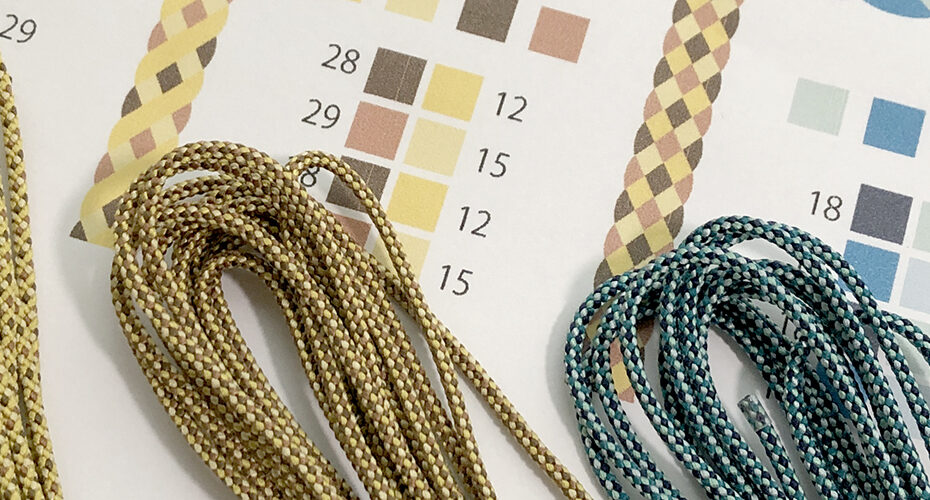Kumihimo is a centuries-old Japanese art of braiding silk threads into intricate cords, historically used for samurai armor, kimono ties, and decorative accessories.
It’s beautiful, methodical, and deeply structural — which, in many ways, makes it a lot like code.
Right now, I’m building my own kumihimo color simulator. Not because there are none available, but because I want to create a tool that truly reflects how an artisan thinks.
But here’s the surprising part: I don’t have a background in computer science.
What I do have is something many digital creators today might not — I learned to design by writing PHP.
Designing by Reading Code
Back in the early 2000s, the internet felt like a quiet library. If you wanted something to appear on screen, you had to build it — piece by piece, tag by tag.
Years ago, when WordPress was just starting out, I was creating websites by hand.
I don’t mean drag-and-drop builders — I mean editing index.php, using the_content() and get_header() tags, reading functions.php, and manually writing meta tags before SEO plugins existed.
At the time, if you wanted to make something look a certain way, you needed to understand why it appeared that way in the first place.
Structure came first. Design followed.
I didn’t just “style” websites — I understood how content was fetched, how logic worked, and how each element was rendered. I wasn’t a developer in the formal sense, but I could read code — and that made all the difference.
Today, most web designers no longer need to touch code.
But back then, you had to think like an engineer to make something beautiful.
Kumihimo and Code: Strangely Alike
Fast forward to today. I work with traditional Japanese cords — real, physical kumihimo made with silk threads in Kyoto. Each design involves:
- A sequence of colors
- A precise braiding structure
- Repetition and symmetry
- Layered complexity that looks simple from the outside
Sound familiar?
Yes — that’s basically a visual loop.
It’s what we used to do in WordPress templates:
while ( have_posts() ) : the_post(); — a structure that renders meaningful output based on internal logic.
When I looked at a kumihimo pattern chart, I found myself thinking:
*“This is just like a template engine.”
So when I started developing my own simulator, I wasn’t lost.
Even though it involved new technologies — JavaScript, HTML canvas, color arrays — the logic was deeply familiar.
I could “read” the pattern and translate it into code — not because I’m a programmer, but because I used to think in PHP.
Why I Decided to Build My Own Simulator
There are a few kumihimo simulators online, but most are limited.
They often:
- Only support basic braids
- Don’t allow real-time color previews
- Lack exportable layouts or palette control
- Don’t match the workflow of actual artisans
As a designer and craftsperson, I needed more:
- I wanted to test how traditional palettes (e.g., indigo + vermilion + gold) would look in actual braid layouts
- I wanted to build color presets for different cultural themes (modern kimono, historical armor, Harajuku fashion, etc.)
- I wanted to share visual concepts with collaborators abroad — artists, accessory makers, textile designers
And above all, I wanted a tool that respected the craft — not just gamify it.
So I started building one.
What It Looks Like So Far
Right now, my simulator lets me:
- Select colors for each strand position
- Visualize the resulting pattern in real time
- Switch between braid types (14-strand, 16-strand, Edo-style, etc.)
- Save preset palettes like “Japan Blue,” “Autumn Leaves,” “Celebration Red”
The interface is still in early development — just a basic UI — but the logic works.
And every time I hit a technical wall, I realize: this is where my old WordPress brain kicks in.
I’m not scared to peek inside the console.
I don’t freeze when something breaks.
I try to read the function, trace the output, and test the logic.
Because for me, this is just another kind of template.
Who This Is For
I’m not building this simulator just for myself.
I believe it could be helpful for:
- Jewelry makers who want to test color schemes before using expensive silk cords
- Kimono stylists who plan coordinated outfits and accessories
- Craft teachers who want a digital aid for their classes
- International customers who buy my cords but want to experiment with layout ideas first
- Other creatives who are drawn to Japanese aesthetics and want to understand its structure
Eventually, I’d love to make this tool publicly available — possibly free or freemium — with features like:
- Save/export patterns
- Color palette libraries (seasonal, modern, historical)
- Simple sharing or download options
Why This Project Matters to Me
There’s a quiet beauty in bridging the traditional and the digital.
Kumihimo is physical, tactile, rhythmic — but the act of simulating it brings a new layer of understanding.
And on a personal level, this project reminds me that:
The knowledge you gain never disappears — it transforms.
I no longer build WordPress sites, but the skills I learned from reading PHP by hand are still with me.
They show up when I write a function.
When I fix a layout issue.
When I explain structure to someone who only sees color.
This project isn’t just about kumihimo.
It’s about the power of knowing how things work — and the joy of making something from the inside out.
To Be Continued…
I’m still building.
There’s a long way to go — UI refinements, palette saving, maybe even animation support down the line.
But if this resonates with you — whether you’re a crafter, coder, or someone who loves tools made with heart — I’d love to connect.
Let’s keep braiding 🌿
